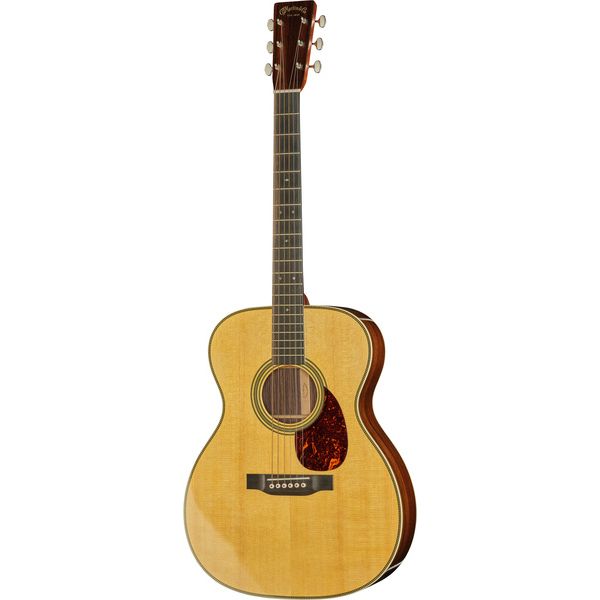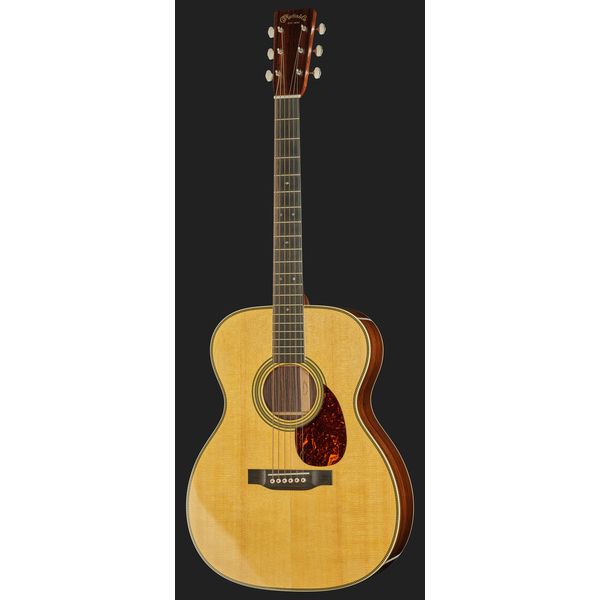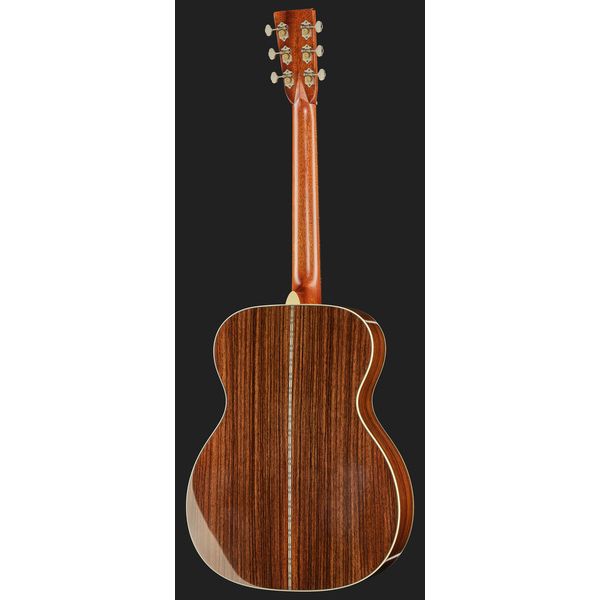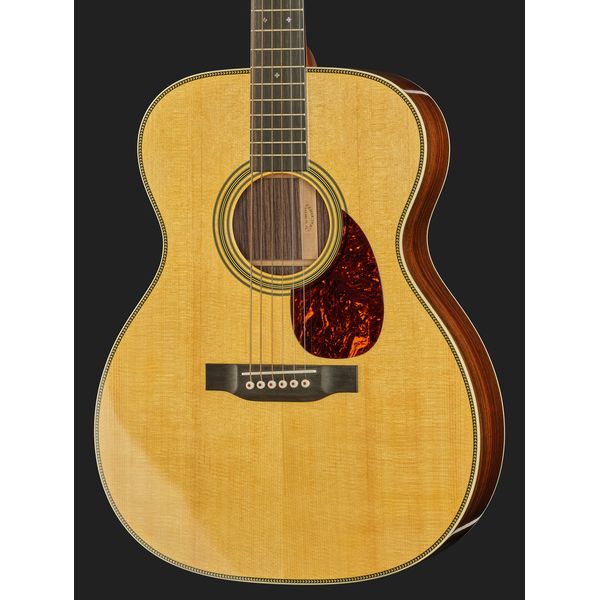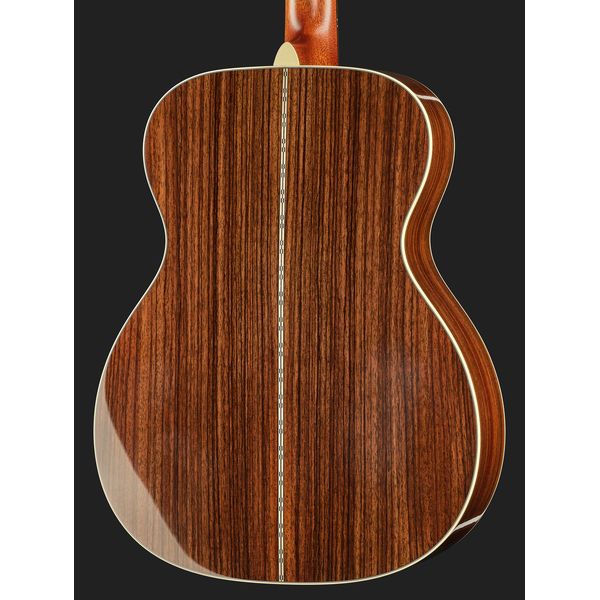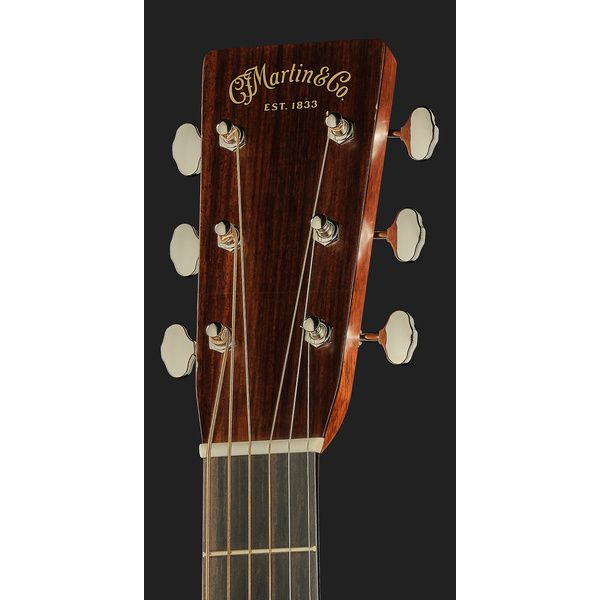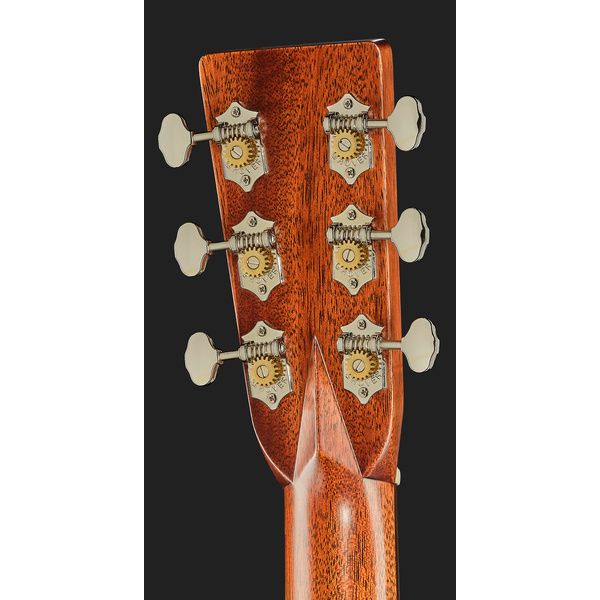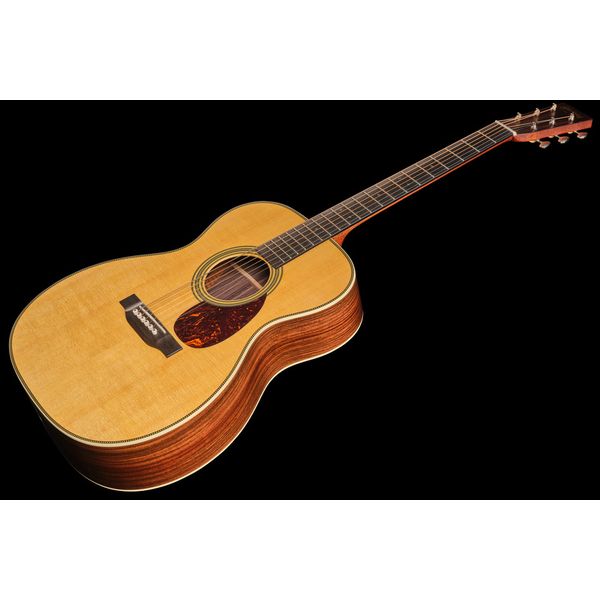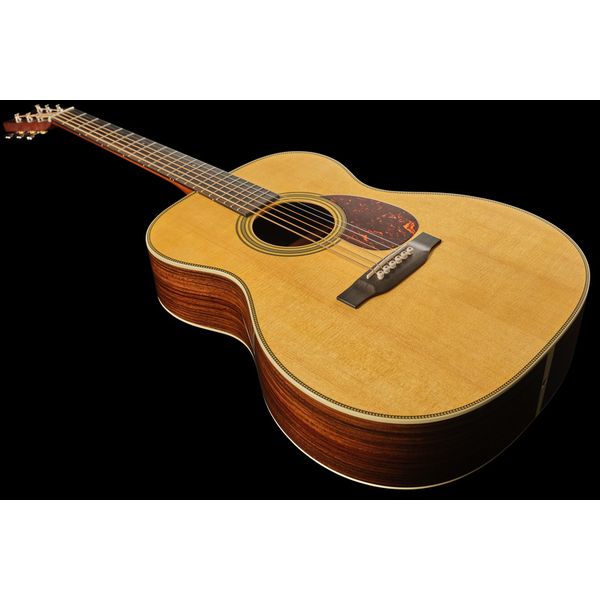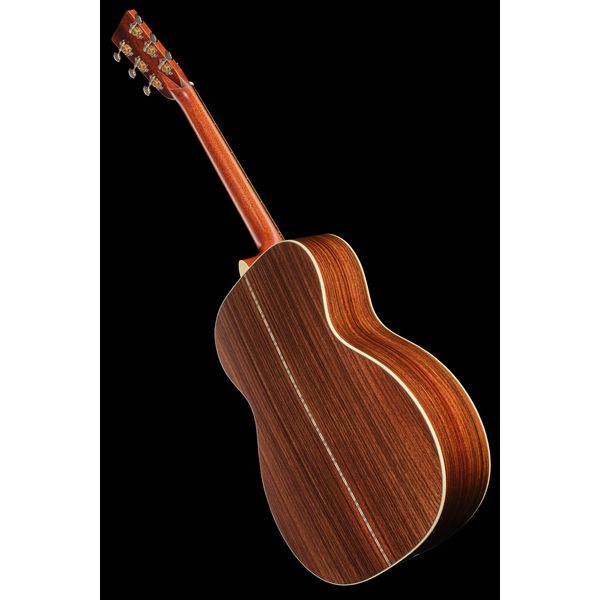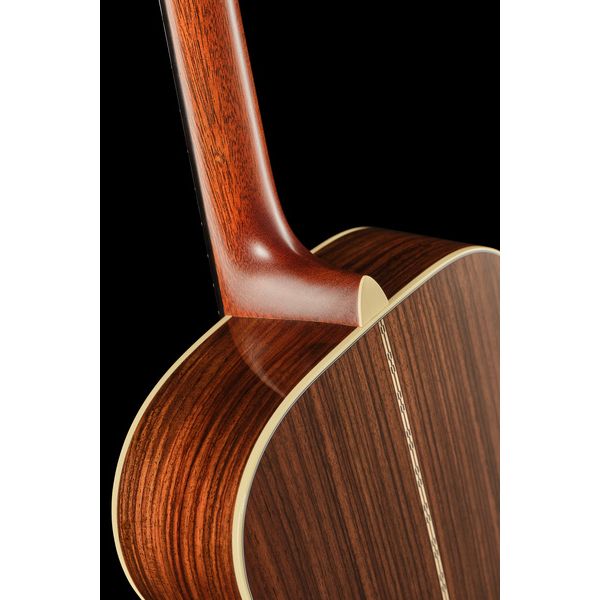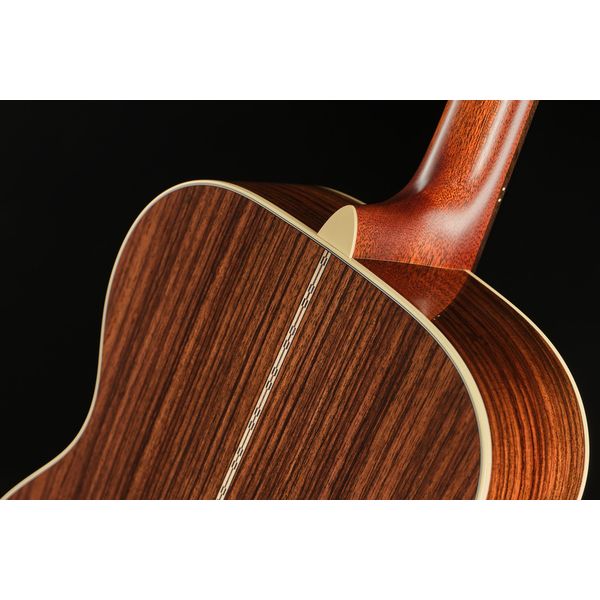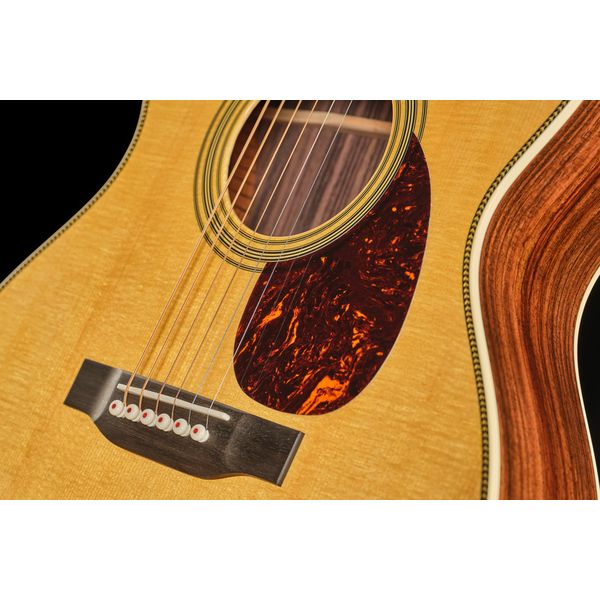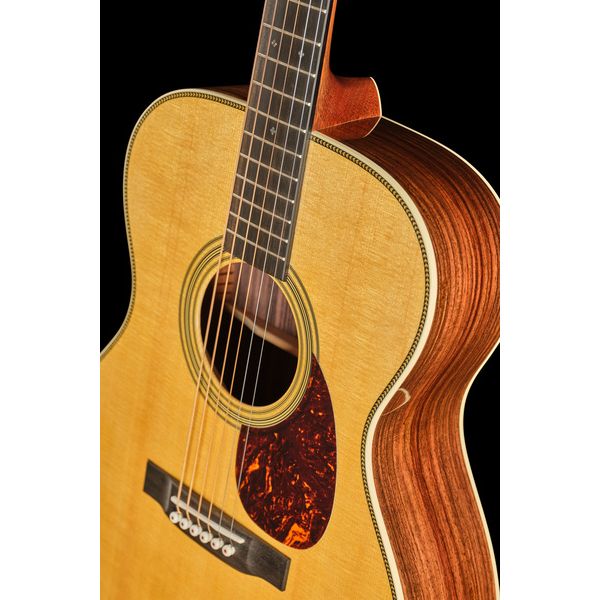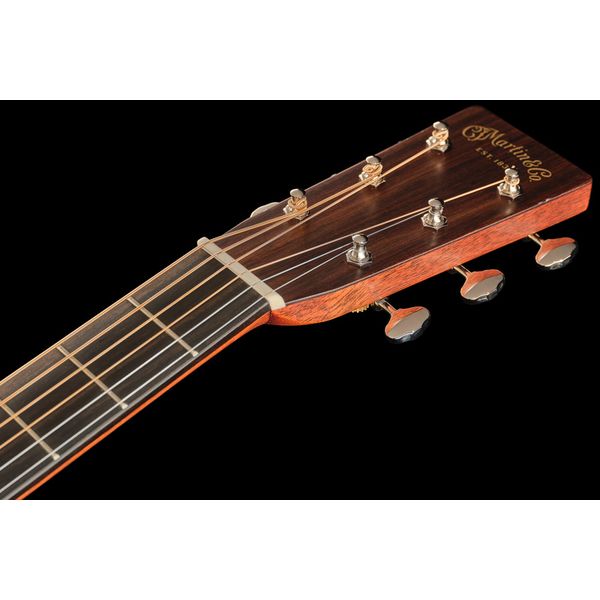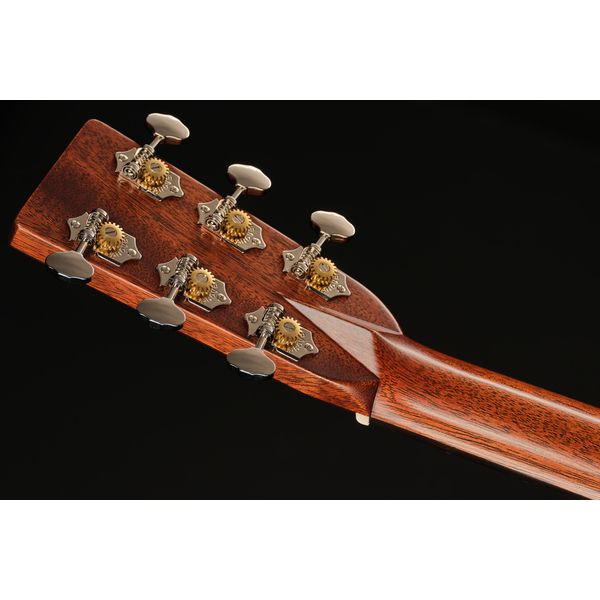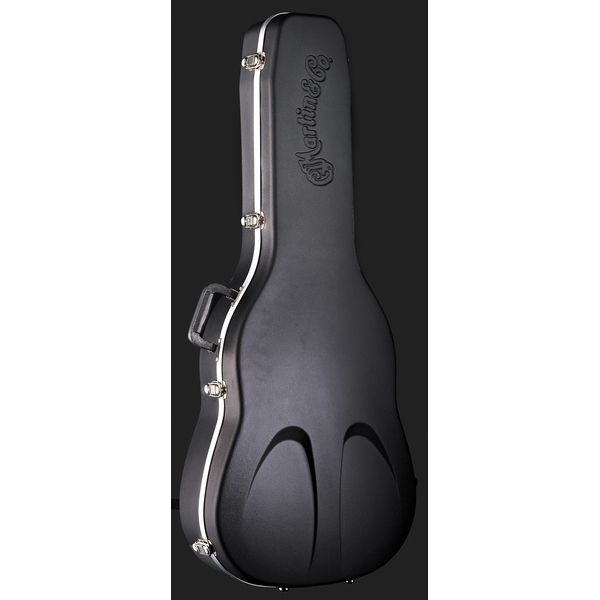I've been in a search for a good acoustic guitar for quite some time now, preferably something balanced that records well and is equally good for strumming as it is for fingerpicking (which is how I play most of the time). The old OM Reimagined model always seemed to me to be a great guitar primarily for playing fingerstyle solo, because of its lush sound rich with overtones, and that natural ''reverb'' that rosewood back and sides provide, but therefore not particularly good for strumming because it could get quite muddy, with too much of that lush content going on in the mids. I've heard some clips of this new and updated model on YouTube and it sounded more balanced than the Reimagined model, and therefore more applicable for my particular purpose, so I've decided to try it out.
FEATURES: If you're ordering this guitar, you probably know very well what you're getting. There is a high quality hard case and an end pin included. Personally, I would like to see a strap button installed on the heel of the neck, but that's a personal preference, so all in all 5 stars there.
SOUND: This guitar had a great sound for playing fingerstyle. As expected, there seemed to be a bit less of mud in the middle frequencies and more clarity, without trebles sounding too thin. When it comes to this particular model, I think that the changes in the bracing benefited the instrument. Still, it wouldn't necessarily be my choice for recording strumming, but it sounds great for fingerstyle and alternate tunings like DADGAD. It's a great sounding guitar, so five stars here.
QUALITY: Intonation. The guitar suffered from bad intonation on couple of strings (it went progressively flat, as you were going up the neck); a problem that persisted even after changing the strings. As it happened, I've had a new bone saddle made for Martins laying about, so I've tried exchanging the saddles, as I've thought that perhaps the saddle is to blame, it didn't help. I don't think that new guitars, especially for this kind of money, should be taken to a luthier to remedy issues, so it goes back.
Interestingly enough, I've tried several new Martins in the last couple of years, this isn't a first Martin that had intonation issues. I was kinda taken aback by the quality inconsistency of these guitars regarding that particular issue. There was another interesting quirky thing I've noticed, about every 2nd guitar suffered from it, which was the 1st string being too close to the edge of the fretboard, which then presumably in conjunction with some frets being bevelled too aggressively resulted in a string easily slipping off the fretboard on certain frets (that's my assumption, at least), especially when doing pull-offs. It's important to note that this particular guitar didn't suffer from this; maybe the new necks of the updated models remedied that issue.
Not that you necessarily need it, but my advice to everyone ordering any new Martin guitar or trying out one is to grab a tuner and check the intonation of each string on the 12th fret then try to play some pull-offs on the first string up and down the neck. If you tend to only play chords in the first few positions, maybe it won't matter that much to you, but if you play more intricate stuff up and down the neck, you might benefit from the advice.
Good luck with your choice!


